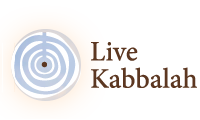On the surface it would seem that Parashat Pinhas is not particularly exceptional or different from other parashot. It is, nonetheless, known for its uniqueness in the protective and healing properties attributed to it. There is a complete volume in the Zohar detailing the structure of the human body, the functions of anatomical parts, and the causes of various diseases which modern medicine has only recently discovered.
What is the secret and power of this parasha?
In discussing this parasha, the Zohar begins by implicating the actions of Pinhas who, not only did he kill two people, was rewarded for it and attained priesthood.
As we already know from the closing of the previous parasha, the Israelites succumbed to the temptation of the Midyanites and Moabites, with the subsequent outbreak of a plague which subsides only after Pinhas kills Zimri and Cozbi. The Zohar explains that Pinhas did not act out of anger or zealotry, but rather from a place of love. This is alluded to by the weapon he used – “…and took a spear in his hand”. The Zohar clarifies: the letters of the word “RoMaH” (spear), when anagrammed, spell “RaHeM”, i.e., a deed of mercy, of love. These same letters are in the word “ReHeM”, womb, where the fetus is nourished with life’s energy, love, warmth and protection.
According to the Zohar, the 248 organs of the human body correspond to 248 organs of the soul, and each organ is intended for the purpose of creating life cycles. This means that not only is it a receiving vessel, but one that has influence and bestows on others. The quality of Hesed, in affecting our surroundings, endows us and our organs with protection from disease. From the time that we mature and are unprotected by the womb, our destiny is in our own hands.
The high priest represents the power of Hesed, and Pinhas, as the result of his action, becomes a priest. Indeed, Pinhas kills Zimri, a leader in the tribe of Shimon and known for his temperament. Pinhas is aware that as a result of his action he will not stay alive, but he nonetheless proceeds and takes action, as his aim is to save the Israelites. In Judaism it is mandated that one should rather risk his own life than commit any of the transgressions of murder, incest, or idol worship; one should rather die than cause extensive anguish to another soul.
Interpreters explain that Pinhas acted from a place of “love your fellow man as yourself” (Liviticus 19:18), and that in his action he was essentially committing suicide; he so empathized and identified with Zimri that he could actually understand what Zimri is doing to himself. The Zohar also indicates an act of “Mesirut Nefesh” (self-sacrifice) on the part of Pinhas, and of sanctifying G-d, for which he attained priesthood.
A life of selfishness is the source of disease, and our purpose is to live our lives in Mesirut Nefesh for an ideal, and not merely let life go by, otherwise our organs will just shut down one after the other. The most powerful healing happens when we restore the energies from the womb, through the energies of unselfish love and giving, dedication and self-sacrifice. Parashat Pinhas is read during the month of Tammuz, which is a water sign symbolizing the power of Hesed, love and deep emotions. Negative feelings are the primary reason for disease and death. Positive energy is the only potent way to cure disease and overcome death; this principle is the basis for healing underlying Parashat Pinhas.
To listen to the weekly Zohar Study click here
For additional study on Pinhas and other portions enter Live Kabbalah University
